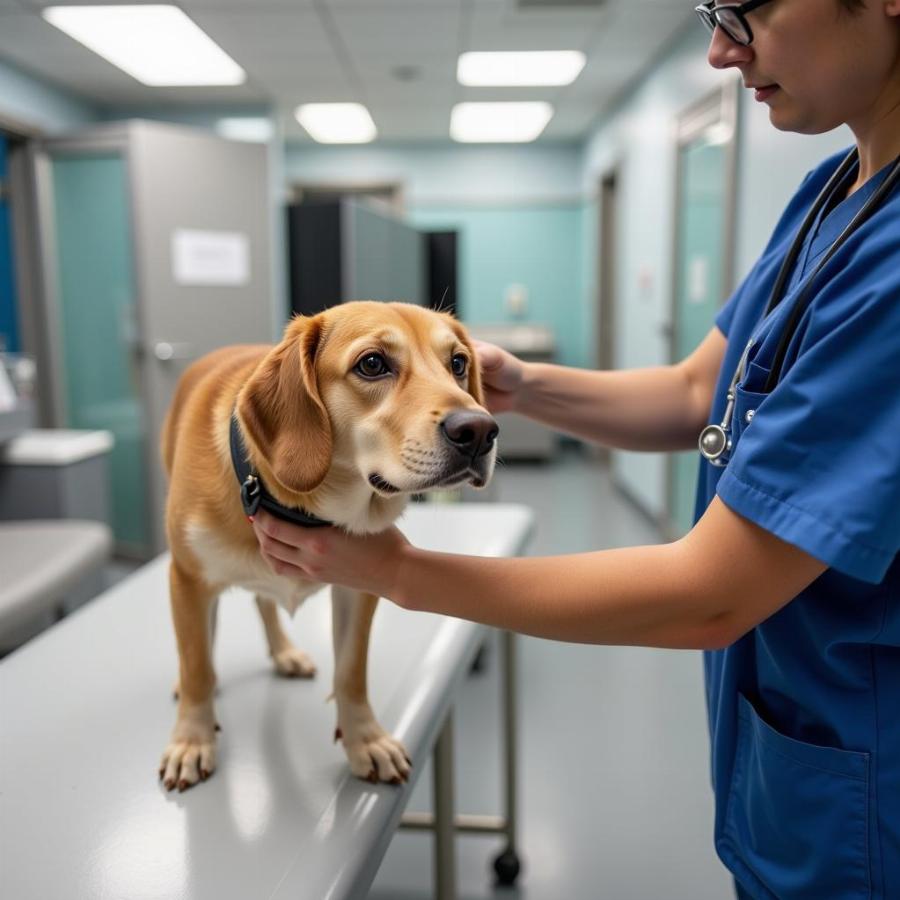The alarming image of a coyote with a dog in its mouth is a stark reminder of the potential dangers lurking in our increasingly urbanized world. This article will delve into the reasons behind these attacks, explore the risks coyotes pose to domestic dogs, and provide practical advice on how to keep your beloved companion safe. Understanding coyote behavior and taking preventative measures is crucial for responsible dog ownership, especially in areas where these wild animals are prevalent.
Why Do Coyotes Attack Dogs?
Coyotes are opportunistic predators, and their diet primarily consists of small mammals like rodents, rabbits, and birds. While a full-grown dog might seem too large for a coyote to target, several factors can contribute to attacks:
- Predatory Instinct: Smaller dogs, especially those resembling prey animals in size and appearance, can trigger a coyote’s hunting instincts. Puppies and small breeds are particularly vulnerable.
- Territorial Defense: Coyotes are fiercely territorial, especially during mating and pup-rearing seasons. They may perceive a dog, regardless of size, as a threat to their territory and attack to defend it.
- Food Competition: Coyotes are attracted to food sources like garbage, pet food left outdoors, and fallen fruit. If a dog approaches a food source a coyote is using, it may be seen as competition and attacked.
- Pack Behavior: Coyotes often hunt in packs, which emboldens them to take on larger prey, including dogs. A pack of coyotes can easily overpower even a large dog.
How to Protect Your Dog from Coyotes
Protecting your furry friend from coyote attacks requires a multi-pronged approach:
- Never Leave Small Dogs Unsupervised: Small dogs should always be supervised when outdoors, even in fenced yards. Coyotes are agile and can easily scale fences.
- Walk Your Dog on a Leash: Keeping your dog on a leash prevents them from wandering into coyote territory or chasing after wildlife that could attract coyotes.
- Avoid Walking at Dawn and Dusk: Coyotes are most active during these times, so try to walk your dog during daylight hours.
- Make Your Yard Less Attractive to Coyotes: Secure garbage cans, remove fallen fruit, and don’t leave pet food outdoors. Eliminating food sources will discourage coyotes from entering your property.
- Install Coyote-Proof Fencing: If coyotes are a known problem in your area, consider installing high, sturdy fencing that extends below ground to prevent digging.
- Hazing Techniques: If you encounter a coyote, make yourself appear large and intimidating by yelling, waving your arms, and making loud noises. Carry a whistle, air horn, or bear spray bear spray on dogs for extra protection. Do not run away, as this might trigger a chase response.
What to Do if a Coyote Attacks Your Dog
If a coyote attacks your dog, your immediate priority is to protect your pet:
- Make Loud Noises: Yell, scream, and make as much noise as possible to scare the coyote away.
- Use Deterrents: If you have bear spray, use it on the coyote, being careful not to spray your dog. Throw rocks or sticks at the coyote.
- Do Not Physically Intervene: While it’s natural to want to protect your dog, putting yourself between the coyote and your pet could result in you being injured.
- Seek Veterinary Care: Even if your dog appears unharmed, take them to the veterinarian immediately after an attack. Coyotes can carry diseases like rabies how do you know if the dog has rabies, and prompt treatment is crucial.
 Chó được chăm sóc thú y
Chó được chăm sóc thú y
Conclusion
The image of a coyote with a dog in its mouth is a sobering reminder of the importance of vigilance and preventative measures. By understanding coyote behavior and taking proactive steps to protect your pet, you can significantly reduce the risk of an attack and ensure your dog’s safety and well-being. Remember, responsible pet ownership includes being aware of the potential dangers in your environment and taking appropriate precautions.
FAQs
- Are coyotes afraid of dogs? Not necessarily. Coyotes can be intimidated by larger dogs, but they can also be aggressive, especially in packs.
- What attracts coyotes to residential areas? Food sources, such as garbage, pet food, and fallen fruit, are the primary attractants.
- Can a coyote jump a 6-foot fence? Yes, coyotes are agile climbers and can easily scale a 6-foot fence.
Beaut Dogs is your one-stop resource for all things dog-related, offering reliable, helpful, and in-depth information on the world of canines. Visit https://beautdogs.com today to explore the wonderful world of dog breeds and learn how to best care for them. When you need assistance, please contact Email: [email protected] to have Beaut Dogs answer in detail and accurately.